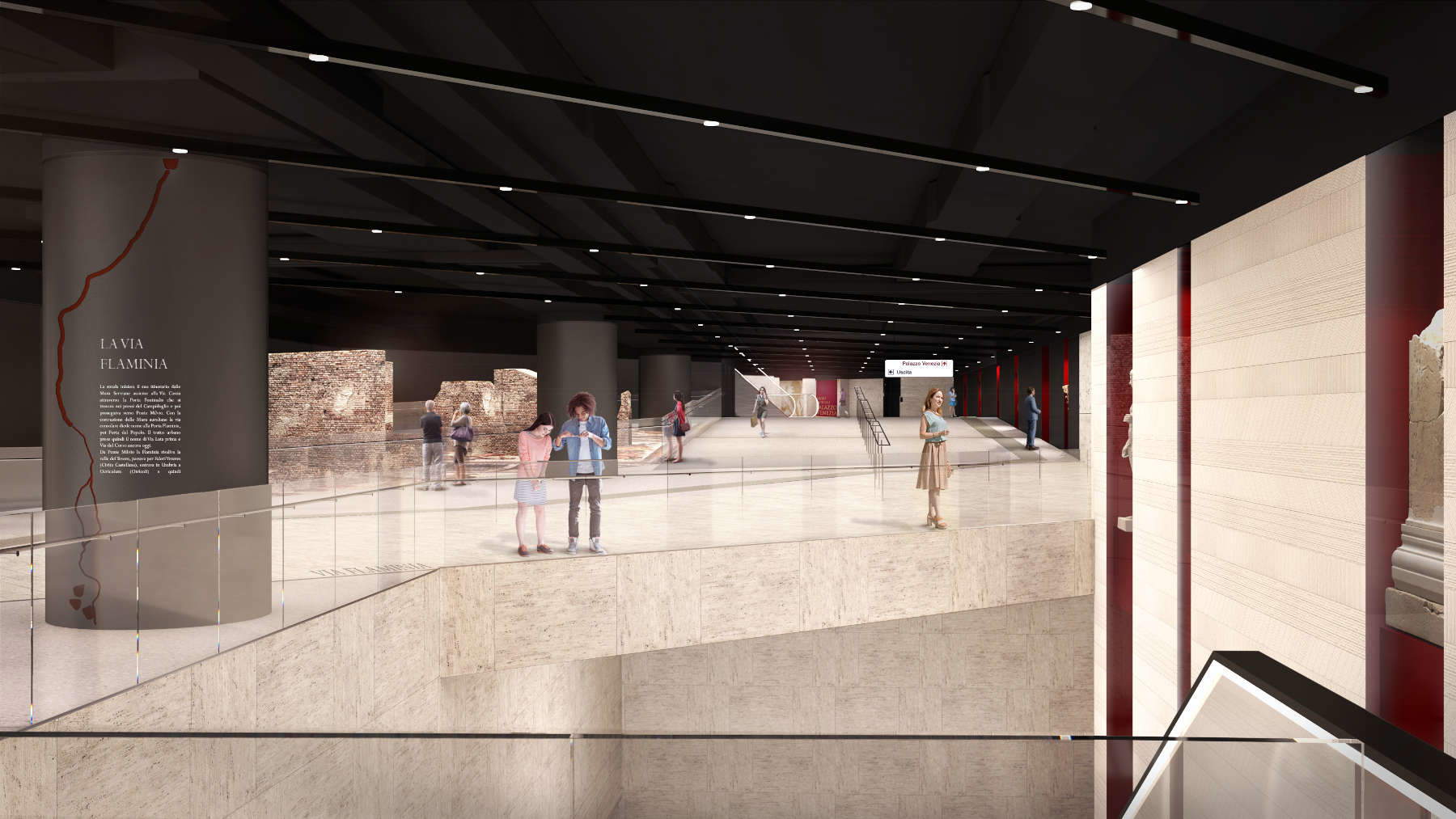A subway station that will also be a museum: this is the Piazza Venezia station in Rome
An archaeological excavation and civil engineering operation for the realization of a great infrastructural work that will also be a museum at the same time. We are talking about the construction of the extension of the Rome Metro with Line C that will reach Piazza Venezia and whose station(Venezia) will be located exactly under the square at a depth of 45 meters, under eight levels, with surface access from three points: Fori Imperiali, Palazzo Venezia and Vittoriano.
The design of the station is futuristic because of the innovative idea of dealing with and managing what the excavations underground will return in terms of archaeological remains, and because of the complex layering of the ground that will be excavated with the multiple remains of Rome’s past: everything that will be found will be specially moved for the time of the works and will then be placed inside the station to become an integral part of it. An archaeological museum in the main area and returns of ancient Rome to decorate and displayed gradually in the various rooms in their original position on the ancient Via Flaminia.
It is objectively an unprecedented one that is being envisaged for the substantial unique historical and monumental environment where excavation will take place at a depth of 45 meters for 8 levels each (in total there will be 27 escalators), of which an area of 4,500 square meters, according to the construction methodologies adopted and to the protocols of archaeological investigation defined with the Superintendence of Rome. This is the largest archaeological excavation in Europe (with an estimated 66,000 cubic meters), in the most important archaeological aera in the world for an investment of 700 million euros with the opening of the station planned in 10 years, so not before 2034, and the completion of the entire Line C after about two years after that of the Venezia station. Ten years of construction and inevitable traffic detours with inconveniences for tourists and residents for a project that comes from afar and will have crossed at its completion nearly 30 since work began in 2007.
The route of Line C connects the east quadrant with the northwest quadrant of the city via the historic center, and to date 22 stations have been completed and 19 kilometers are in operation. Completion is still missing 7 stations, three of which (Porta Metronia, Colosseo-Fori Imperiali and Piazza Venezia) are being built in parallel.
In the three videos released by one of the companies carrying out the work, the rendering of the new section of Line C, the museum hub of the Piazza Venezia station, and specifics on the stages of construction in the archaeological area.
The floor of the first underground level will be the museum headquarters with also the function of connecting the three exits at the three monumental points in the area (Vittoriano, Palazzo Venezia and Fori Imperiali) with a pedestrian path that will allow people to pass from one of the three points at the edge of the square without passing over the surface.
Many will be the findings for this excav ation at a depth that has never been reached considering that the perimeter retaining walls of the excavation reach a depth of 85 meters, of which preventive investigations have already uncovered the of what were once Hadrian’s Auditoria (inside which were the large lecture halls where philosophical discussions and public readings of literary works were held: the Auditoria are part of a larger architectural complex of the Hadrianic age, placed at the crowning of the western hemicycle of the Forum of Trajan, adjacent to the libraries and Trajan’s Column) or the ancient tabernae (seats of the commercial activities present on the Via Flaminia).
Glass, steel, travertine, and pietra serena will be the materials that will be most used for the exhibition area in the museum route to make them visible to the public, including a panoramic elevator that will plow tens of meters high in open space to allow the arrival at the rail level by showing the exhibits. There are 27 escalators planned and 6 elevators. The Metro Line C in the total project will have 29 stations (there are 3 under construction and 4 in the planning stage) connecting the city from the periphery to the east to the northwest crossing the historic center, for a 26 km route of which 17 underground and 9 above ground that will allow intersection with Line A at San Giovanni and Ottaviano and Line B at Colosseo and FL1/FL3 - Pigneto.
 |
| A subway station that will also be a museum: this is the Piazza Venezia station in Rome |
Warning: the translation into English of the original Italian article was created using automatic tools. We undertake to review all articles, but we do not guarantee the total absence of inaccuracies in the translation due to the program. You can find the original by clicking on the ITA button. If you find any mistake,please contact us.





























